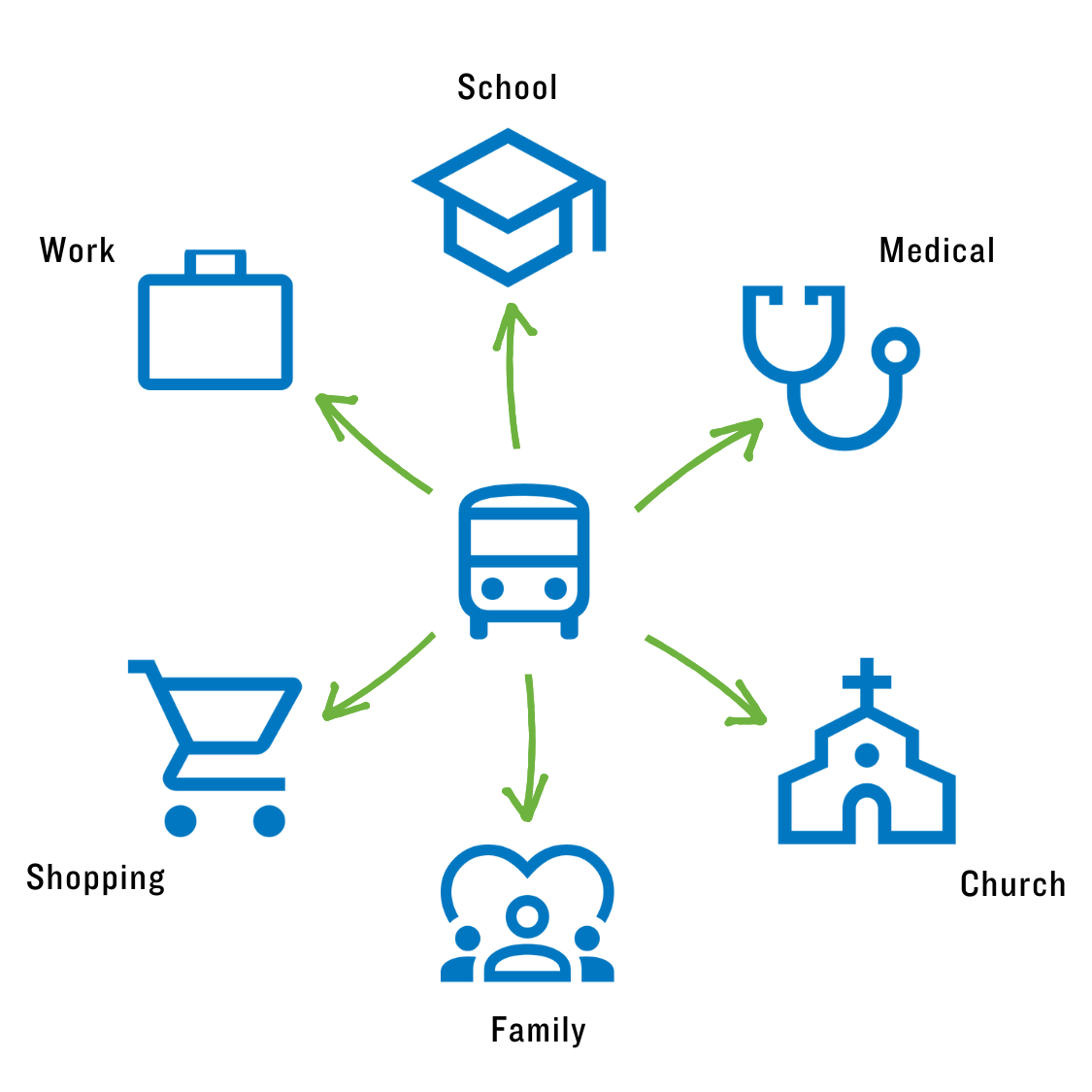Michigan Transit Basics
- Michigan provides some level of public transportation in all 83 counties, provided by more than 75 public transit agencies and a number of specialized services providers.
- These providers primarily utilize buses of various sizes, as well as passenger vans, ferry boats, and two rail systems - Detroit’s QLine and People Mover.
- Public transit agencies operate with a combination of federal funds, state funds, and local support, which include local general funds, rider fares, and local property tax millages - which voters have approved for about 70% of local transit systems.
- In FY 2023, Michigan’s transit providers served more than 47 million passengers; this is an average of more than 125,000 rides every day and an increase of nearly 20% from the prior year, as ridership continues to recover from the pandemic.
- More than 5 percent of all households in Michigan do not have any cars – that number is 10% in Grand Rapids and Lansing and 22% in Detroit.
- Michigan public transportation connects tourists to festivals, attractions, and events. For instance, the QLine, People Mover, SMART, and DDOT systems served hundreds of thousands of visitors to the 2024 NFL Draft in Detroit, and local bus systems regularly serve major festivals like the Grand Haven Coast Guard Festival, the Ann Arbor Street Art Fair, and the National Cherry Festival in Traverse City.

Public Transit Makes a Difference
- Public transit providers provide essential rides to passengers, many of whom are unable to drive - including students, seniors, veterans, and individuals with disabilities.
- The availability of public transportation reduces dependence on others like family and friends, especially as Michigan’s population continues to age in many communities.
- The availability of reliable public transit can also reduce public spending on health care, corrections, and other social services.
- Public transportation is significantly safer than operating a personal vehicle and increased public transit services are correlated with lower overall auto insurance damages.
Public Transit Moves Us Forward
- When public transit services have expanded, rider demand has grown in response: several providers in Oakland County have more than doubled their ridership since the passage of a countywide millage 2022.
- Michigan voters continue to overwhelmingly support public transit: more than 90% of local public transportation ballot measures (27 out of 29) passed in 2024 – consistent with a long history of 90%+ passage rate for local transit proposals.
- Every $1 invested in public transportation generates $5 in overall economic returns.
- Home values near public transportation are up to 24% higher, and median sales prices for office properties near public transportation are between 5 and 42% higher.
- Public transit helps employees connect with available jobs and build their careers.
- More than 75% of Millennials said it is important for their city to offer opportunities to live and work without relying on a car. More than half of Millennials surveyed say they would consider moving to another city if it had more and better options for getting around.
- More than any other generation, Millennials want their community leaders to provide convenient alternatives to driving, such as walking, biking, and public transportation. Gen Z wants to live near transit more than any other generation.
